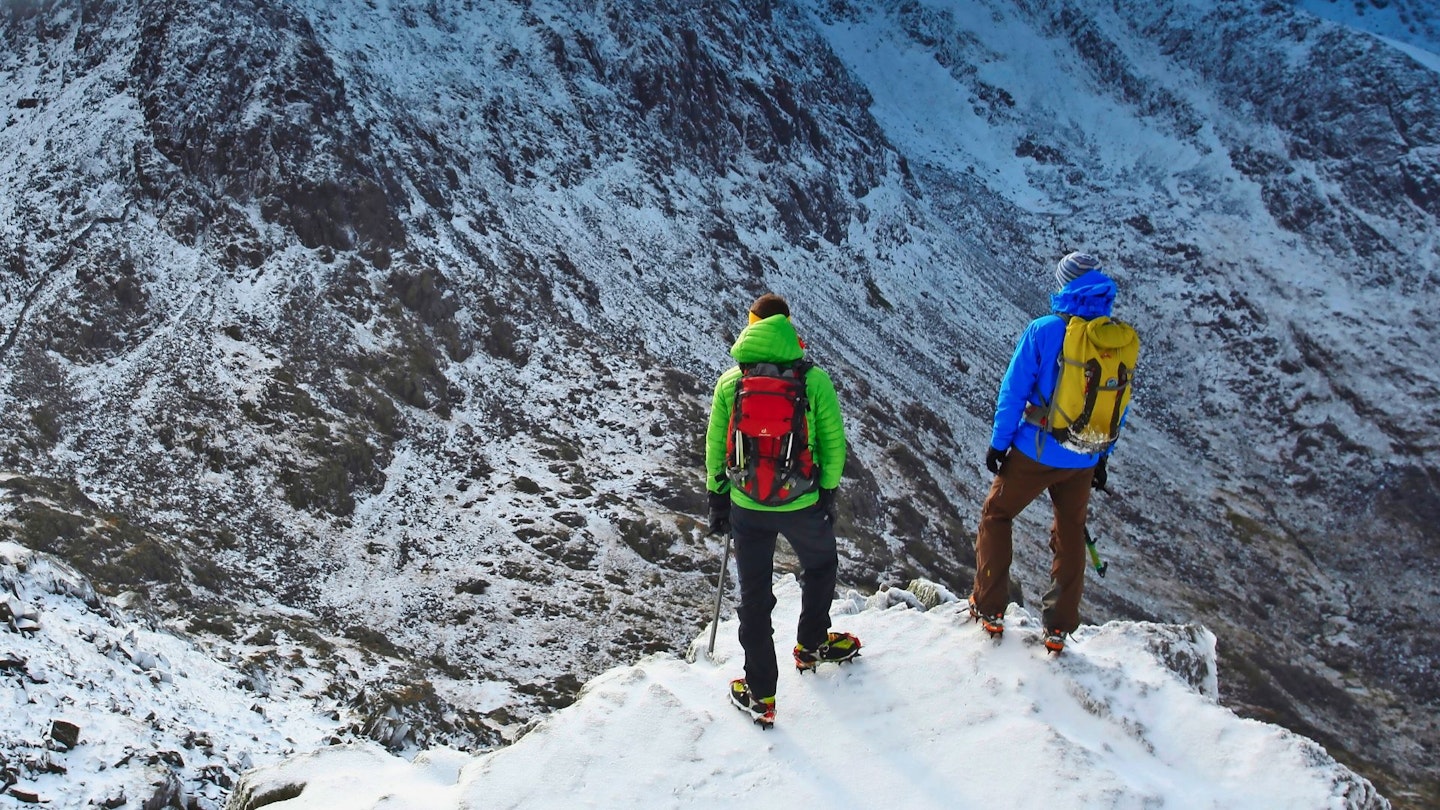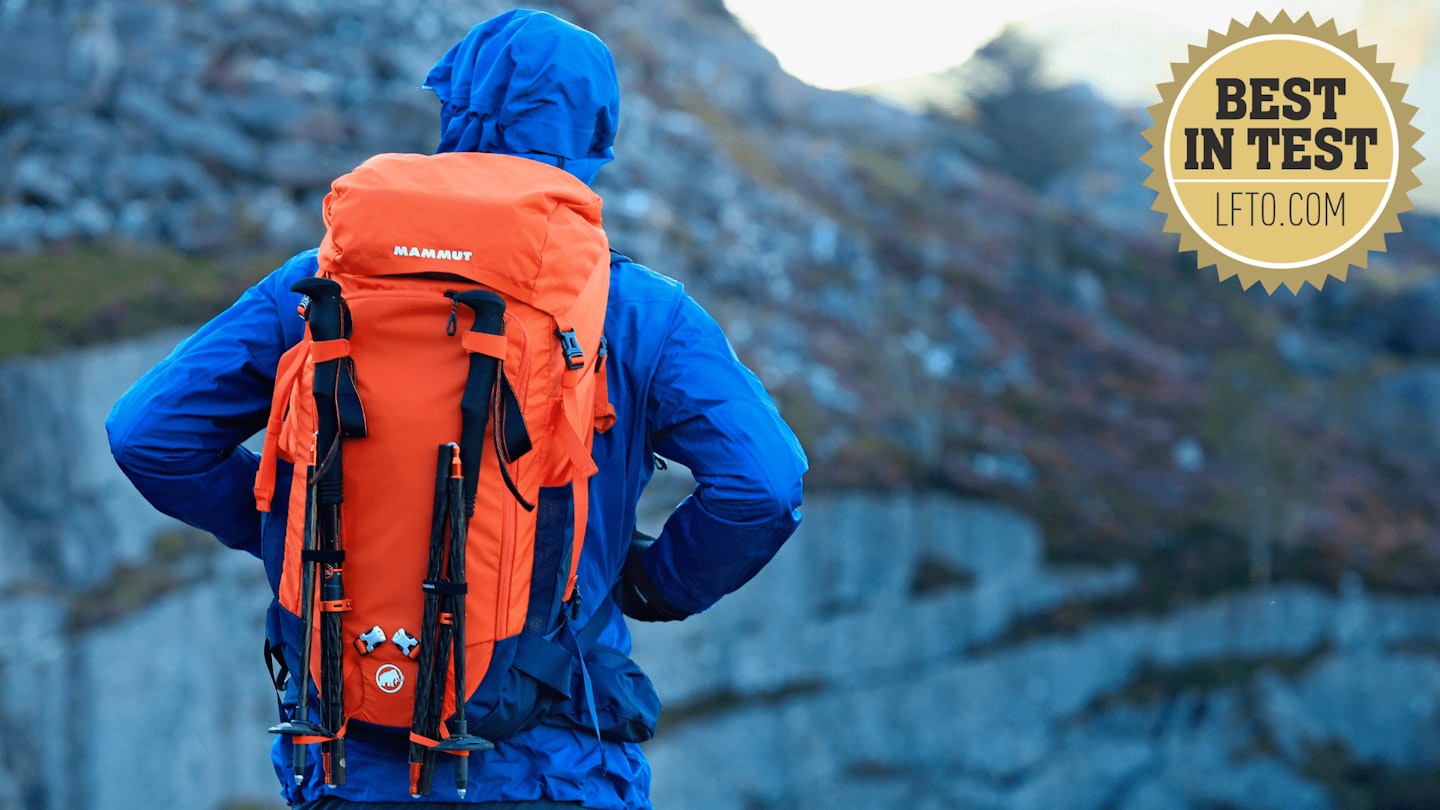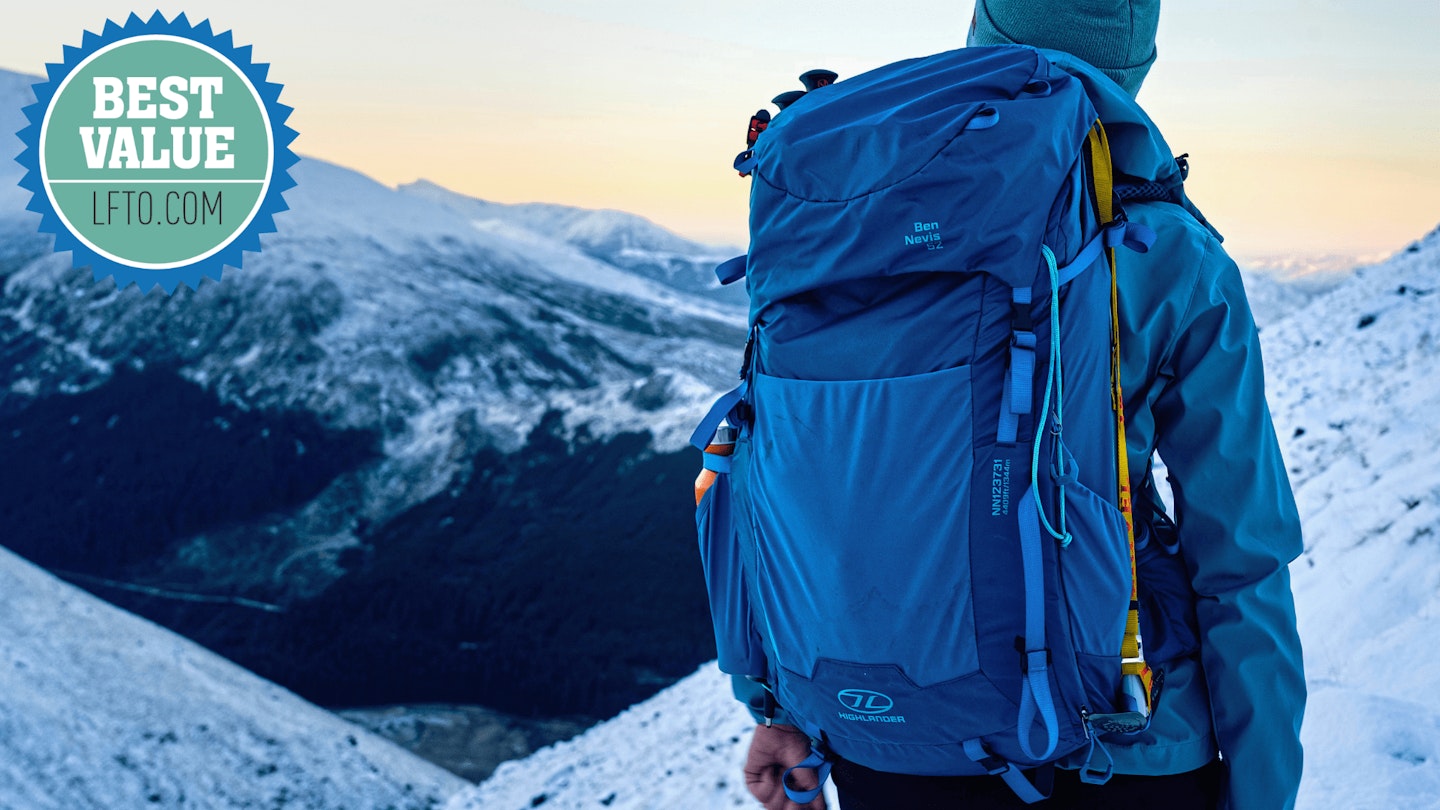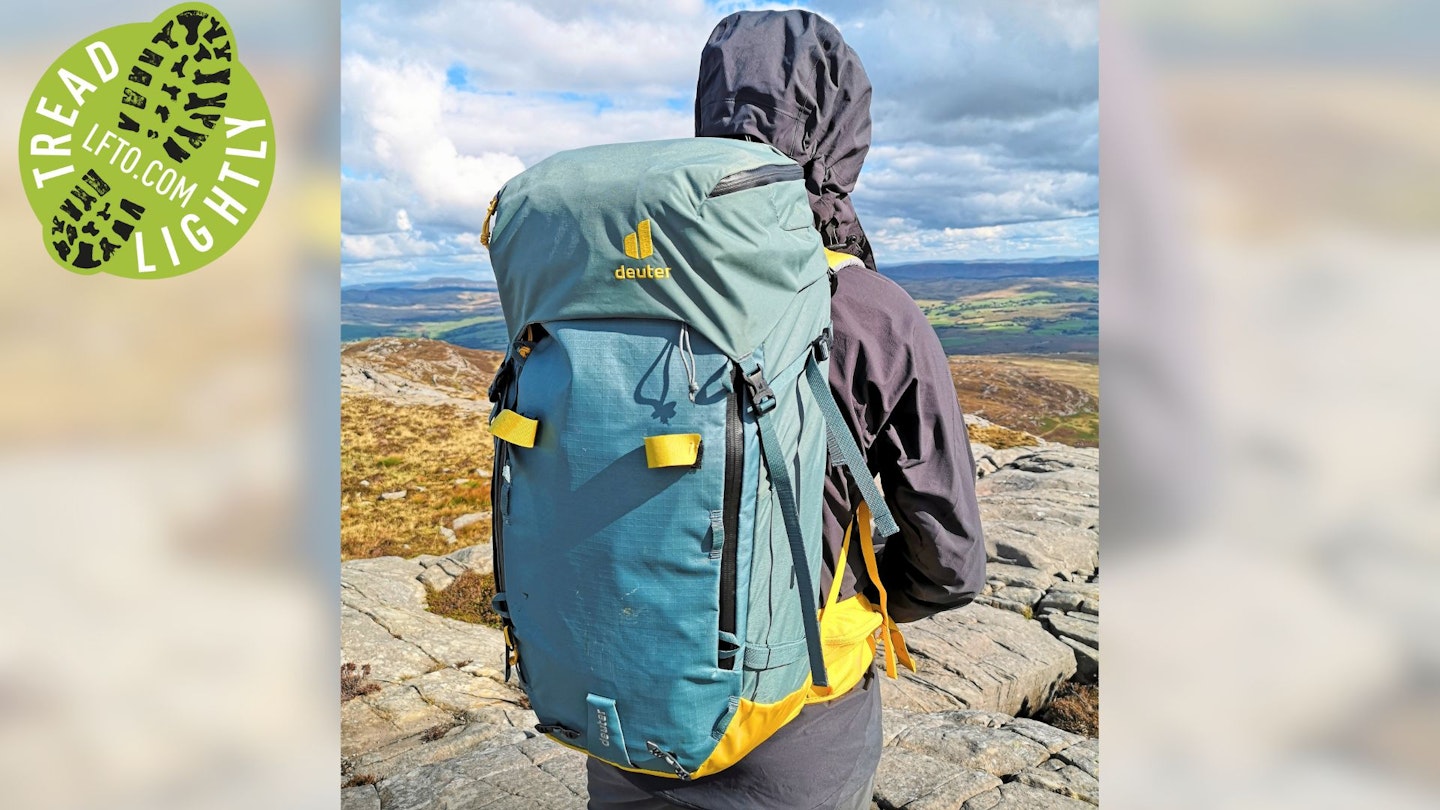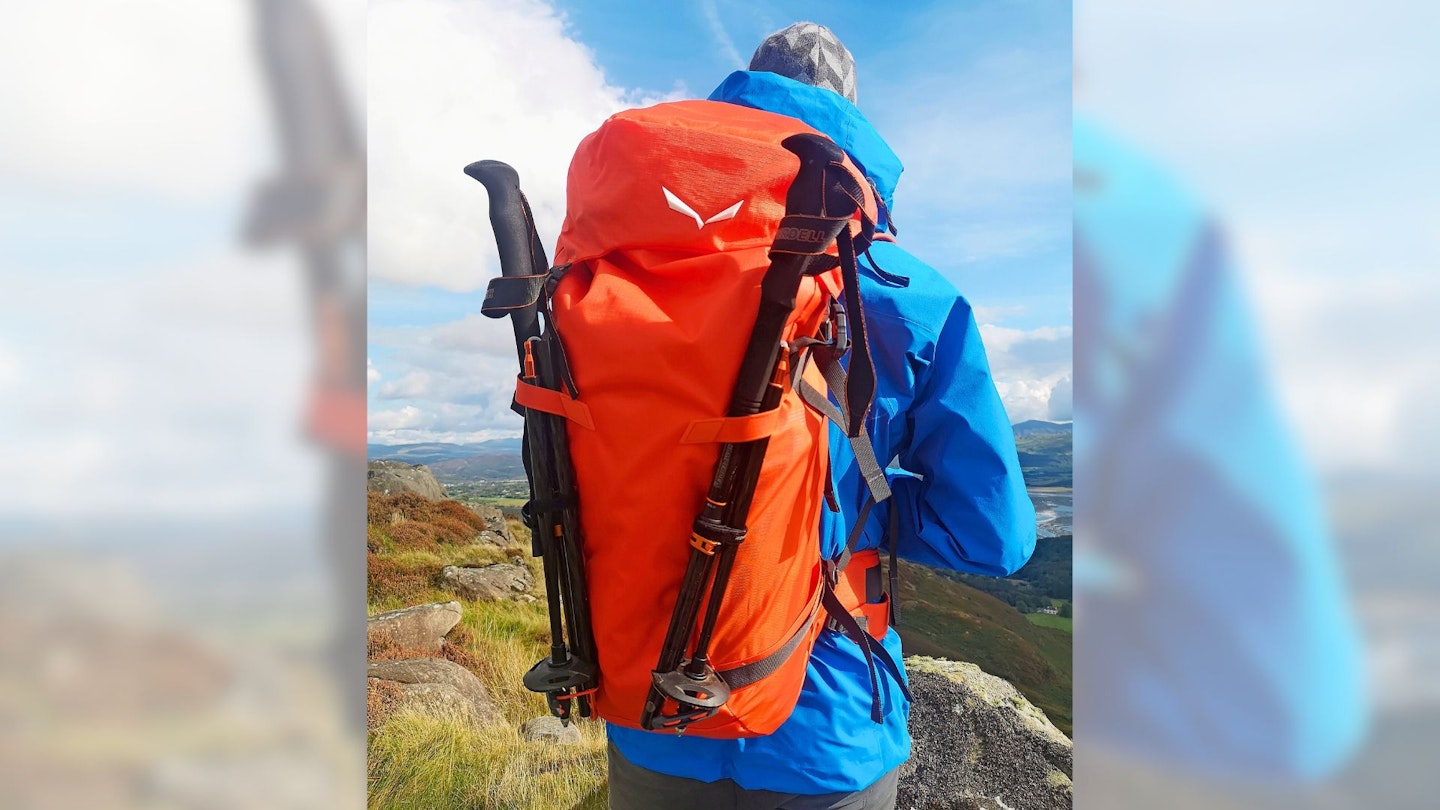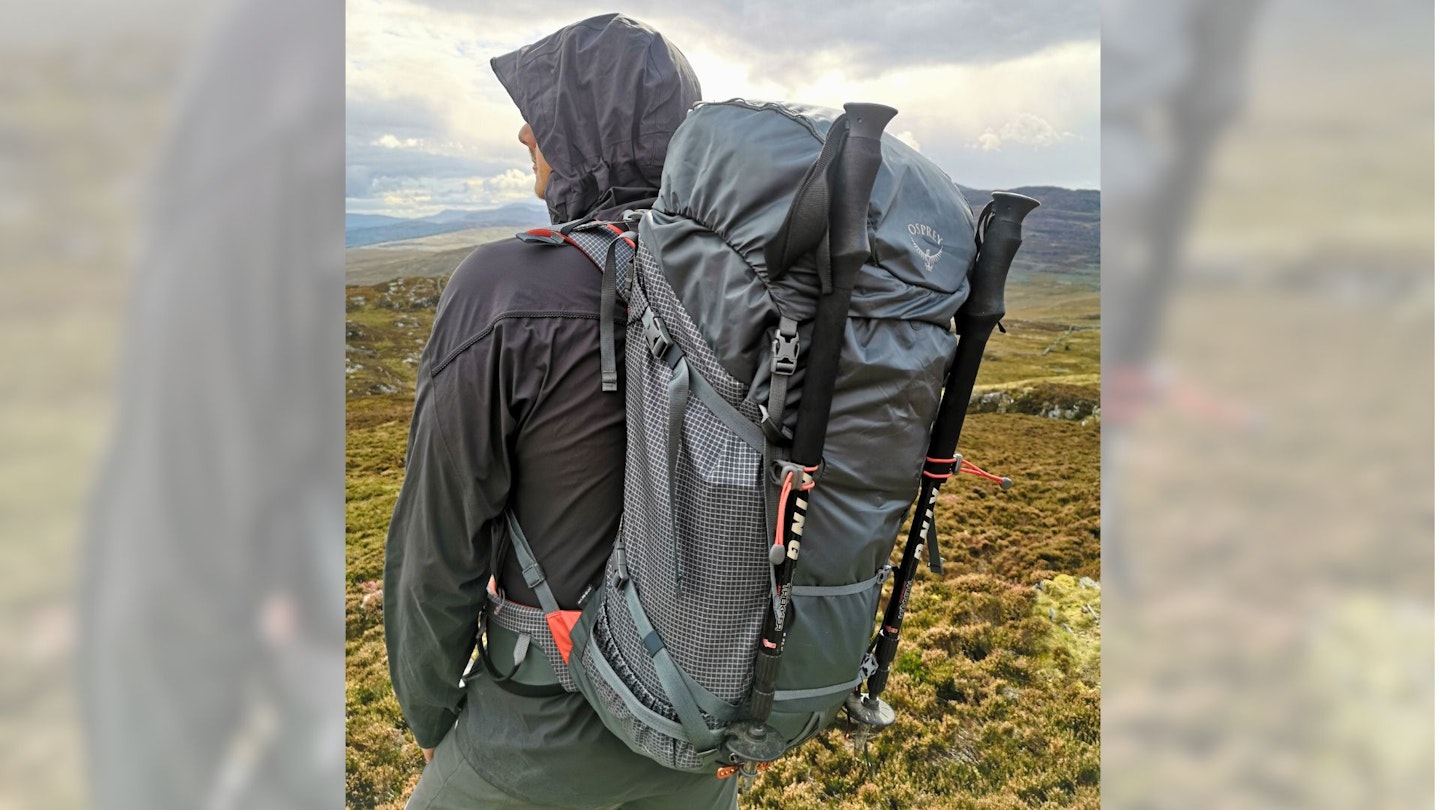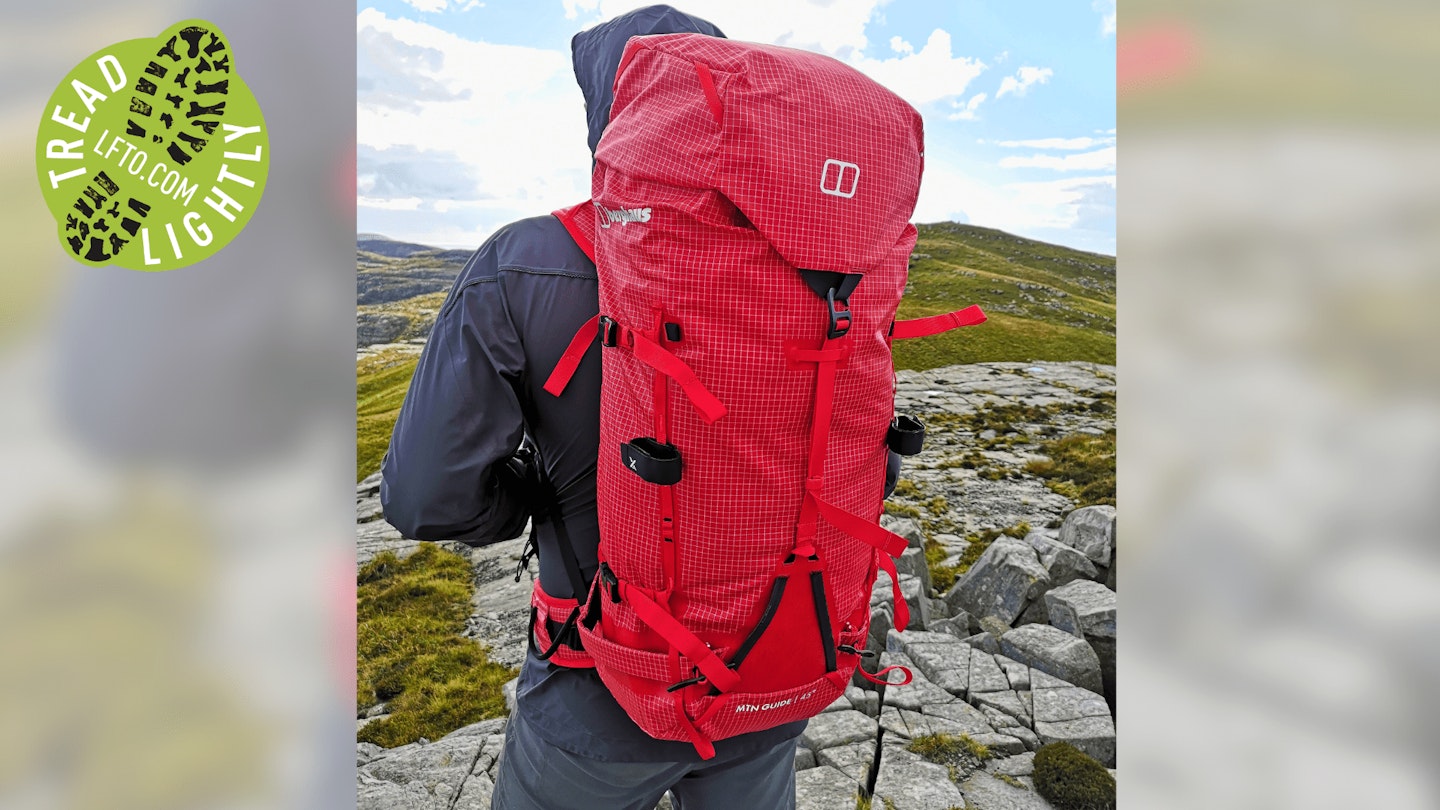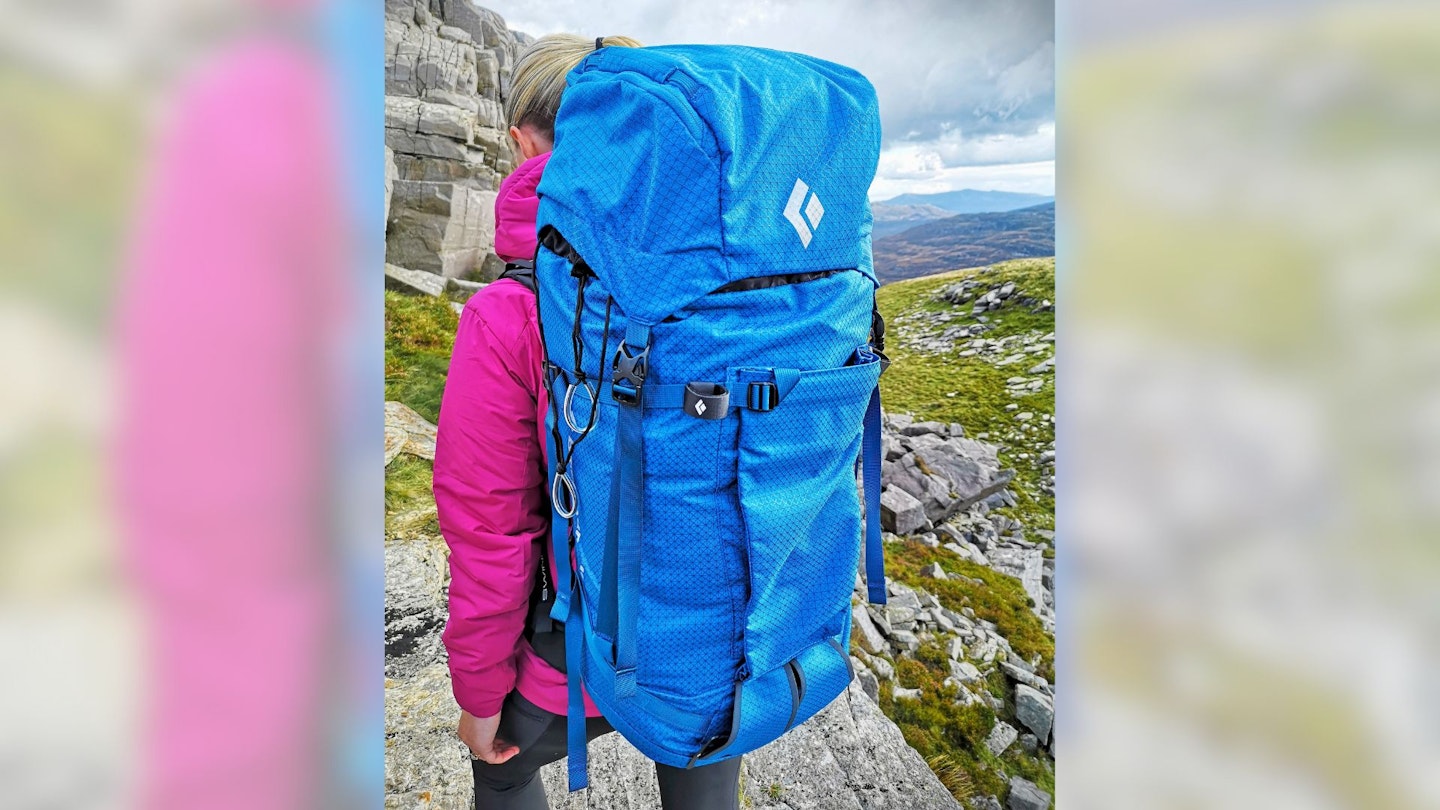You don't always need a tough mountaineering pack, but in volatile alpine conditions, this style of hiking backpackchanges from a niche sub-genre to a core essential.
Of particular benefit in the coldest months of the year, the LFTO team has been testing a range of mountaineering backpacks that are durable enough to make it in the winter mountains. There's a lot that goes into choosing the pack that's right for you. We've considered features like trekking pole and ice axe attachments, to their overall comfort and fit, and toughness of the fabrics.
A good mountaineering pack is ideally around 40-50 litres in order to carry all the gear you’ll need. Winter in alpine conditions means a lot more kit than the rest of the year.
Best mountaineering backpacks at a glance:
Best in test: Mammut Trion 50 - view on alpinetrek.co.uk
Best value: Highlander Ben Nevis 52L - view on highlander-outdoor.com
Best women's winter pack: Deuter Freescape Pro 38+ SL - view on alpinetrek.co.uk
At the end of this roundup, we've included some comprehensive advice on how to select the right winter backpack. Our list is fairly diverse, though everything here is virtually bombproof. We wouldn't recommend going any easier on the specs. Here are our top picks for truly memorable winter mountain adventures.
Best winter mountaineering backpacks in detail
Description
Mammut’s Trion Spine 50 (full review) is a previous ‘Best in Test’ winner in this category. The Trion 50 is essentially the same design, though with a simpler fixed back system that forgoes the brand’s unique double pivoting ‘Active Spine’ tech. So, you don’t get the same custom fit or luxurious carrying comfort – but on the flipside, this version is much lighter and cheaper.
It also adds convenient access to the main body via a big, U-shaped rear zip that runs around the back panel, just below the shoulder straps. We’re starting to see this feature on a few of the latest packs to hit the market, and it’s a bit of a gamechanger for grabbing extra layers fast. That’s always good when you’re out in winter conditions.
The back panel and harness are lightly padded and well ventilated. The fabrics are tough, with a Cordura nylon base, and there is ample useful storage. We particularly like the big, zipped front pocket. But, this pack only comes in one size and the back length (18in) isn’t adjustable, so it’ll either fit you or it won’t.
The Trion 50 has the ability to carry a rope, ice axe, trekking poles and even skis. It features dual side compression straps, hydration compatibility and can be overstuffed thanks to an extended drawcord collar and a floating lid.
Pros
- Lightweight
- Tough
- Comfortable with a heavy load
- Plenty of features
- Mammut a Fair Wear Foundation member
Cons
- One size
- Non-adjustable back length
Description
Priced at £100 or so less than other packs in this list, the Ben Nevis 52L backpack is a bargain, offering good features, a comfy carry and solid weather protection.
Updated with a new design, style and fit, some 30 years after Highlander’s first Ben Nevis pack was released, this modernised version is made from a tough 200-denier ripstop nylon. The sewn-in lid (not floating) has two zippered pockets and a key clip, while the main compartment has good capacity, drawcord closure and a hydration bladder sleeve.
Its two-way zipper made it easy for us to access the bottom of the pack, and two stretchy side pockets accommodated water bottles, while the front mesh pocket was very useful for stashing kit too. You also get pole and ice axe attachments, zippered hipbelt pockets, integrated raincover, and chest strap with whistle buckle.
The back system features a rectangular steel frame, suspended mesh panel (for good ventilation) and nicely padded hip fins and shoulder straps. We think the hip fins could be pre-shaped better, and the overall build quality is mid-range.
The Ben Nevis 52L is more of a general hiking pack than a super-technical mountaineering backpack. But that will suit many people and at this price, you’ll struggle to find anything of better value.
Pros
- Superb price
- Solid performance
- Includes raincover
Cons
- Not as technical as more expensive packs
Description
The lack of dedicated women's hiking packs is a source of frustration. However, Deuter does make some superb women's packs, and we found its Freescape Pro 38+ SL is the best for winter mountain treks. Though primarily designed for ski mountaineering, this pack works well for winter walks and scrambles too. Despite being nominally smaller than other packs on test, it swallows plenty of kit and is positively laden with useful on-board storage.
There are two generous front pockets, a hipbelt pocket, twin lid pockets and a side security pocket for a phone or GPS unit.
The roomy main compartment has a double drawcord collar with a mesh hanging pocket and a hydration sleeve inside. The top lid pocket even has a microfleece-lined pouch, ideal for stowing snow glasses or goggles. In terms of comfort, back padding and straps supposedly use a snow-shedding fabric but we found they seem to soak up a lot of moisture, which feels cold and clammy.
There are attachment points for ice axes and trekking poles, plus ski holders, a rope strap, a detachable helmet net and removable webbing straps for lashing crampons. Deuter really has thought of everything here.
We also like the fact that, just like the Mammut and Berghaus packs on test, it has a U-shaped zip around the back panel. This ensures fast, easy access to the main body. However, being lighter-framed than the other packs here, ito doesn’t carry heavy loads quite as well.
Fabrics are tough enough to take plenty of hammering, while being 100% recycled, bluesign-certified, and PFC-free – all big ticks for sustainability. There’s also a men’s version of this pack, the Freescape Pro 40+.
Pros
- Plenty of storage space
- Surprisingly versatile
- Rear-access zip
- Deuter a Fair Wear Foundation leader
Cons
- Doesn't bear heavy loads as well as others
Description
This robust pack is built from high-tenacity double ripstop nylon, with a reinforced base. The fabric is 100% recycled too. But as well as being tough, it’s lightweight and weatherproof.
There’s a roll-top closure beneath a floating, double buckle lid. The lid can be removed to save weight – that would normally mean losing the lid pocket, but there is a secondary zipped top pocket with a key clip inside, plus a large, zipped front pocket.
The main compartment has a two-way, water-resistant side zip for quickly grabbing or stowing an extra layer. It’s also hydration-compatible, with other features like side compression straps, a rope strap, ice tool/trekking pole loops and ski holders.
It feels stable when loaded, with a plastic framesheet and a U-shaped metal stay to add structure and rigidity. But the most striking design elements are the harness and back system, which feature split shoulder straps and a heavily vented ‘Dry Back Contact’ panel. It’s a good weight-saver and makes for great airflow.
As such, you could use this pack year-round, which adds to its overall value. The lightness and ventilation do come with trade-offs. The floating hip fins aren’t the most supportive, and we found that the split straps tend to fold over when you’re getting the pack on and off. For winter use the vented back panel gets chilly and accumulates snow and ice.
Pros
- Easy Access to main compartment
- Durable construction
- Good ventilation
- Suitable for year-round use
- Salewa a Fair Wear Foundation leader
Cons
- Back panel can be cold and doesn't shed snow well
Description
Osprey’s Mutant 38 is a Trail favourite, but it is a couple of litres short of our 40-50 litre ‘sweet spot’ for a winter pack. So, this time around we went bigger and tested the Mutant 52.
The pack retains its reinforced double base and robust back panel, so it’s still just as tough. It’s a stable load-hauler, too, thanks to a removable plastic framesheet that is reinforced with two angled aluminium stays. But its fabrics are sustainable too, being bluesign-approved and made from recycled content, with a PFC-free water-repellent finish.
It’s a unisex design but comes in two back lengths to ensure a good fit, while the harness and hip fins are nicely padded without feeling bulky. This ensures it’s comfy but also streamlined.
The front panel has attachment points for trekking poles or ice axes, with removable straps for carrying crampons. There’s also an optional helmet net in the lid.
Inside the main compartment you get a hydration sleeve and a useful mesh pocket (though we wish the key clip was located here instead of in the outer lid pocket). The pack is easy to load thanks to a wide mouth drawcord opening, but there is no rear or side access to the main compartment.
Pros
- Good fit
- Comfortable and supportive
- Highly durable
- Uses sustainable fabrics
Cons
- No rear/side access
Description
This is a true ‘bomber’ mountain pack from Berghaus’ technical Extrem collection. It’s extremely tough and weatherproof, with a main body made from TPU-coated 400-denier nylon. This fabric is 100% recycled, as is the plastic hardware. Other panels are made from dope-dyed ripstop polyester to reduce water waste. TPU is also more eco-friendly than traditional water-repellent finishes. It’s great to see top-end kit being manufactured sustainably.
The pack has a streamlined look but is fully featured. Like the Mammut and Deuter packs on test, it has back panel zipped access, so you can get to your gear without having to unstrap kit that might be lashed to the front and sides of the pack. It’s able to carry a rope, ice axes, trekking poles and even skis. There’s a removable helmet net, plus twin grab handles and multiple lashing points.
Inside, there’s a big hydration sleeve and a security pocket. You get two more pockets in the lid too. The floating lid can be removed to save weight, and – cleverly – the pack can then be closed, roll-top-style, giving a more weatherproof seal than just relying on a drawcord.
It carries reasonably well with a full load, and comes in either short or regular back lengths for a better fit. Although, the low-profile harness and hip fins are designed for freedom of movement rather than plush carrying comfort.
Pros
- Two sizes
- Customisable lid
- Stands up to heavy winter conditions
- Berghaus a certified B Corp
Cons
- Other choices are more comfortable
- Technical features are overkill for some
Description
This is a big, burly pack with a technical focus on Alpine climbing and mountaineering, which is reflected in the design and features. It is fitted with pick pockets and metal ‘dogbone’ hardware to fit through the head of an ice axe. There’s also an external crampon pouch and a tuck-away rope strap. Luckily, most of those elements transfer well to cold-weather adventures in the UK too.
It’s certainly tough enough for Scottish winter epics, being made from heavy-duty ripstop nylon. The conventional top-loading configuration has a floating lid, twin buckles and a double drawcord closure with an extended collar. This makes the pack easy to overstuff when carrying a full complement of winter gear. But lower bungees or side wand pockets are absent, so it is awkward to carry trekking poles.
The lid design is excellent, with inner and outer pockets. The lid is even big enough to take a climbing helmet. The deep main compartment has an expanding hydration sleeve, plus an extended two-way side zip that makes it easy to dig around inside without having to unbuckle the lid.
It is available in two back lengths and, while the back system is fairly straightforward, it makes for a comfortable carry. Ergonomic shoulder straps offer enhanced mobility when scrambling or climbing, even with a heavy load. This was the heaviest pack on test – though you can strip weight by removing the frame and hip fins.
Pros
- Hardy
- Excellent lid design
- Two back lengths
- Great mountaineering features
Cons
- Heaviest on test
- Strict alpine focus won't suit all hillwalkers
What to look for in winter mountaineering backpacks
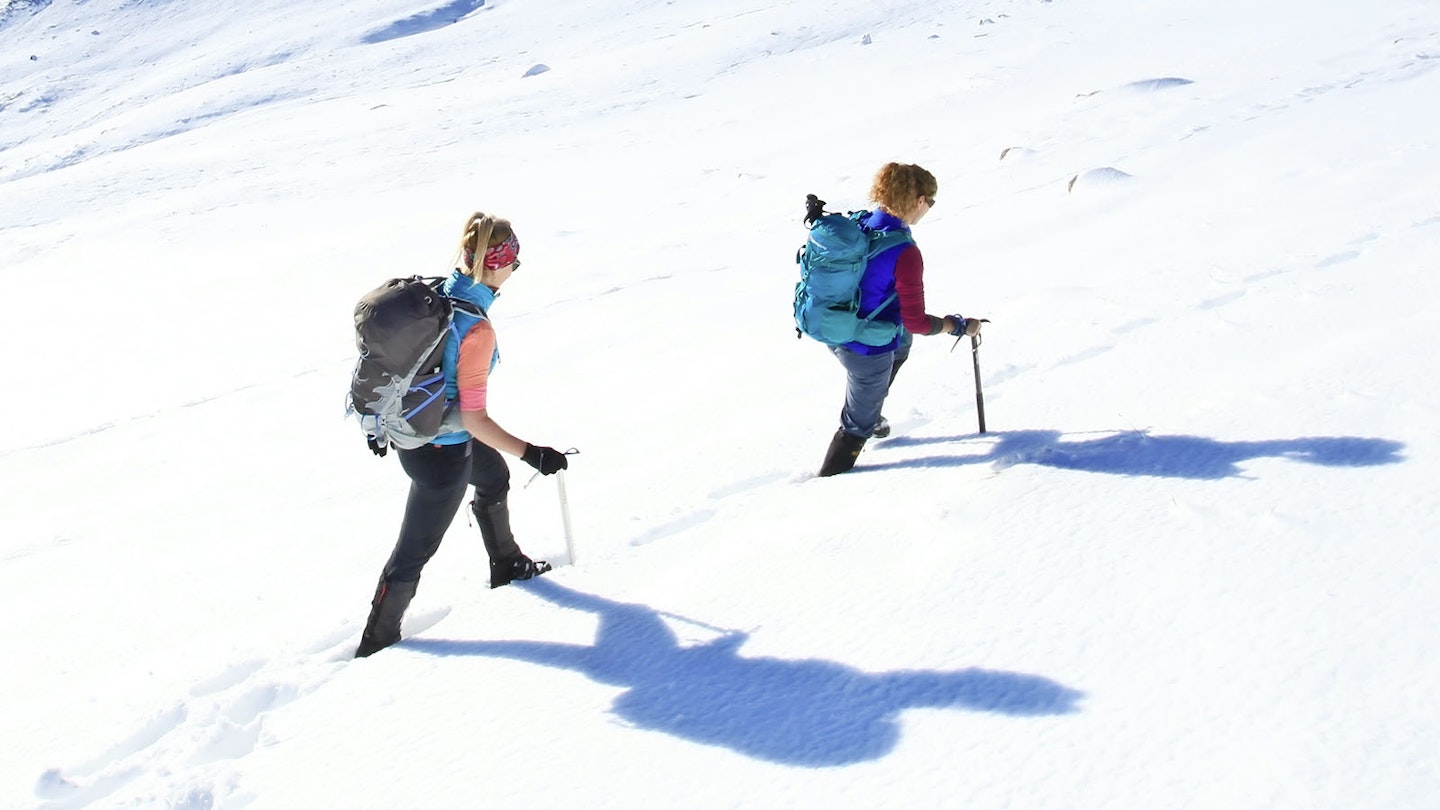
What is a mountaineering backpack?
Mountaineering packs generally have a slim, long shape, with minimalist external features and a close-to-the-body fit. They have a no-nonsense design, often with removable or strippable features to be customisable for technical winter activities.
More general use hiking packs tend to be slightly wider, with side pockets, intricate features and high-tech back systems.
What kind of back system should a winter pack have?
All backpack systems have the same goal: to transfer the load to your hips and provide a comfy carrying experience. You'll need a stiffer frame and a thickly padded pre-curved belt for heavier loads.
It's important that the belt that wraps snugly around your hips, bearing weight without feeling excessively tight. Manufacturers often state a maximum load (kg) a backpack is designed to carry.
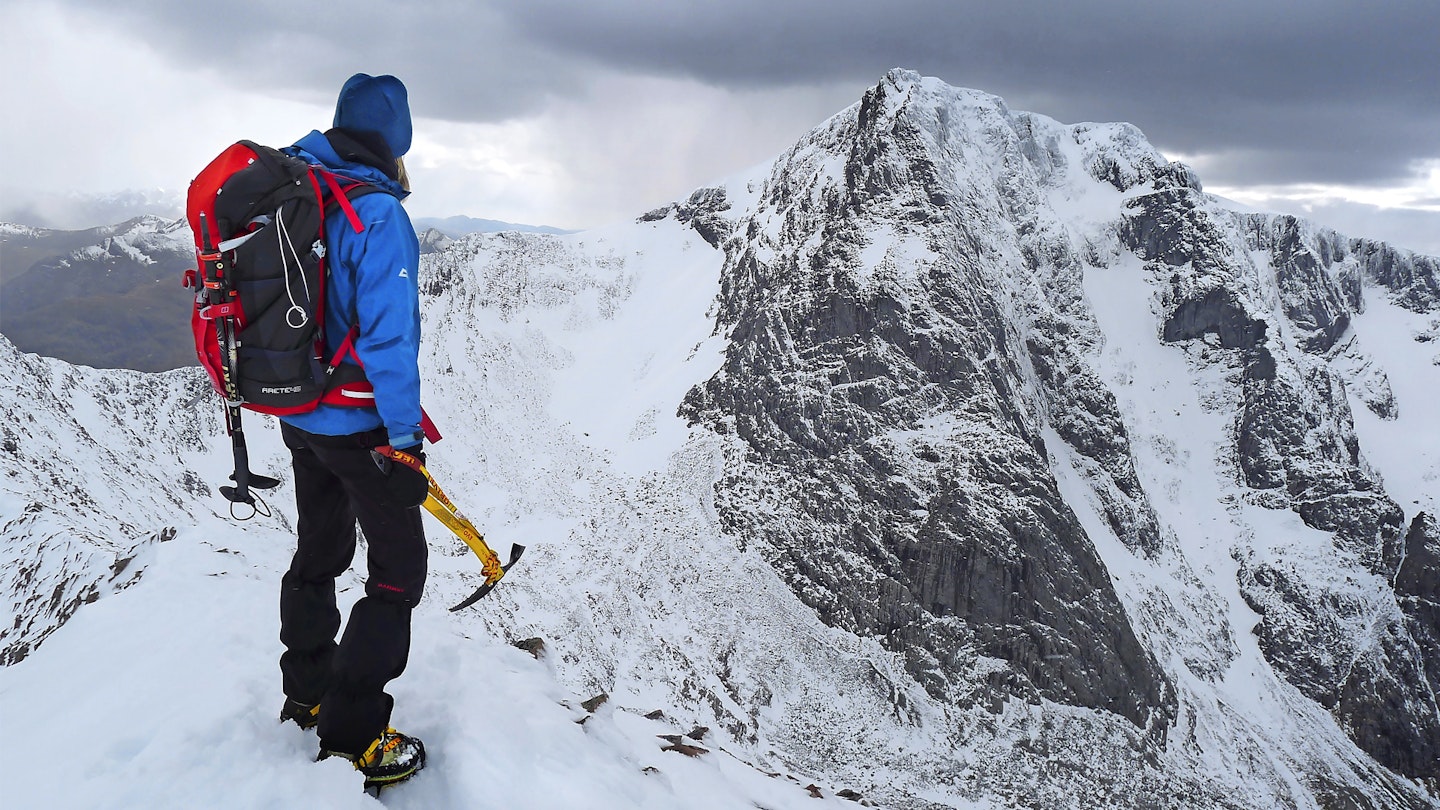
Which backpacks have the best ventilation?
Back panels made from perforated foam or padding carry the load directly next to the body. This approach is stable, which is a good trait for heavy loads, climbing, scrambling, and generally challenging treks. But this design has a trade-off with ventilation.
Some backpacks have a channel to improve ventilation, but overall, mesh back panels hold the pack’s bulk away from your back, thus improving ventilation. However, the load can feel like it’s levering away from you and therefore best suited for lighter loads.
How should a winter hiking pack fit?
Begin by measuring your back length. It’s vital to pick a backpack with a size appropriate for your torso length. Some backpacks come in various length options, some are adjustable via webbing straps or Velcro, and some come in only one size.
Shoulder straps should fit comfortably and be adjustable to your body shape. Padding thickness and contouring will affect the overall load-bearing comfort of shoulder straps. A sternum strap enables lateral connection of the shoulder straps to boost comfort and stability, while load lifter straps adjust how close the upper part of the backpack is to your back.
Trying on a loaded pack is the easiest way to do tell if a pack fits you.
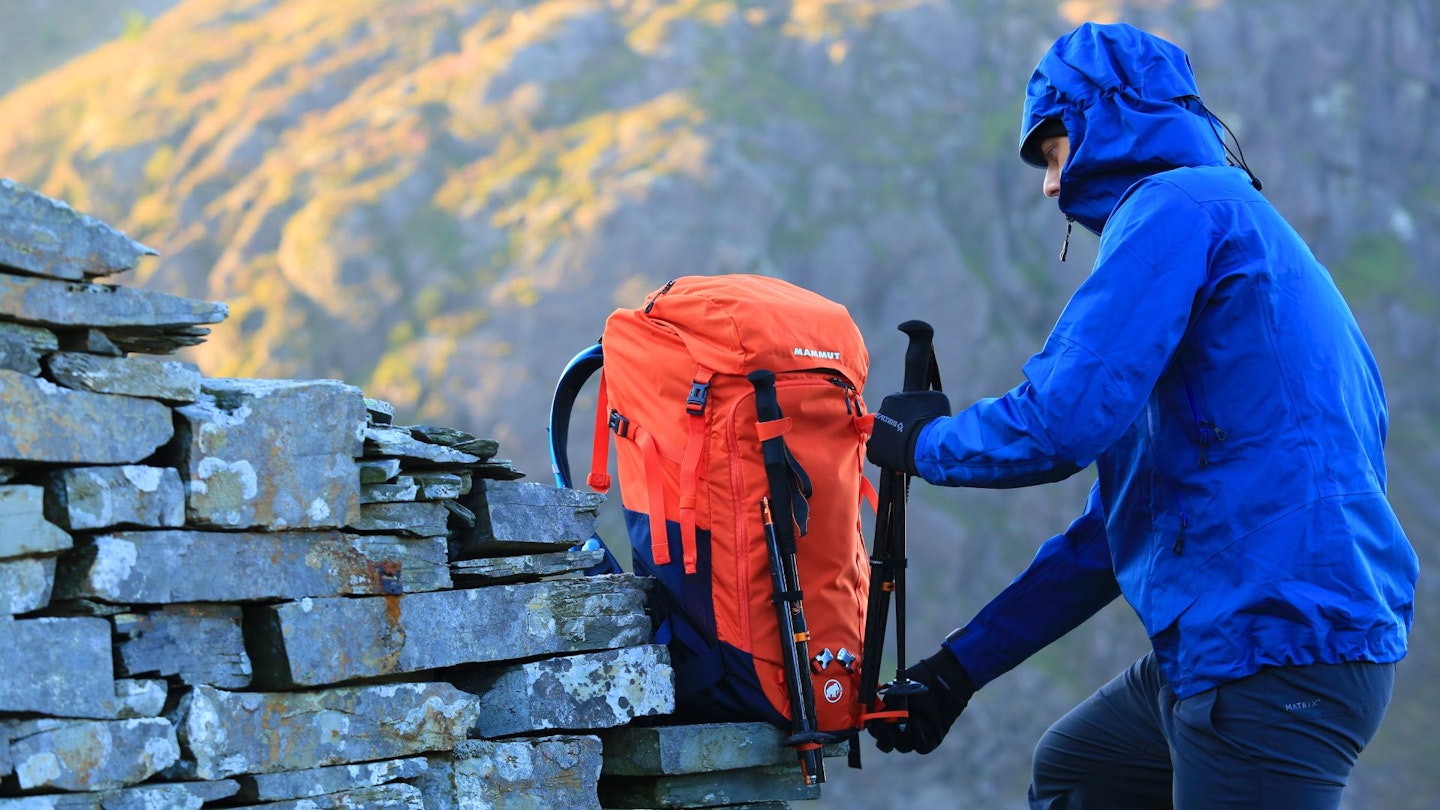
Are mountaineering backpacks waterproof?
While hiking backpacks usually have some water-repellency and will often withstand a heavy shower or two, they aren't waterproof (particularly when seams aren’t sealed or external zippers are exposed).
Some packs come with waterproof covers, while others are better paired with a waterproof pack liner or dry bags.
What other features should a mountaineering backpack have?
A variety of pockets is important. Zippered hipbelt pockets are handy for stashing gear you’re likely to need on-the-go. Internal zippered pockets are great for car keys or a wallet, and elasticated side pockets are perfect for a water bottle. Some packs also feature large stuff pockets made from stretchy mesh.
External compression straps, webbing loops, toggles, and bungee cords can be used for attaching items such as ice axes, trekking poles and crampons.
The lid covers the top main opening to the rucksack. Some lids are fixed to the backpack while others are detachable with a ‘floating’ design. A current trend is towards lidless backpacks with roll-top closure.
How we tested
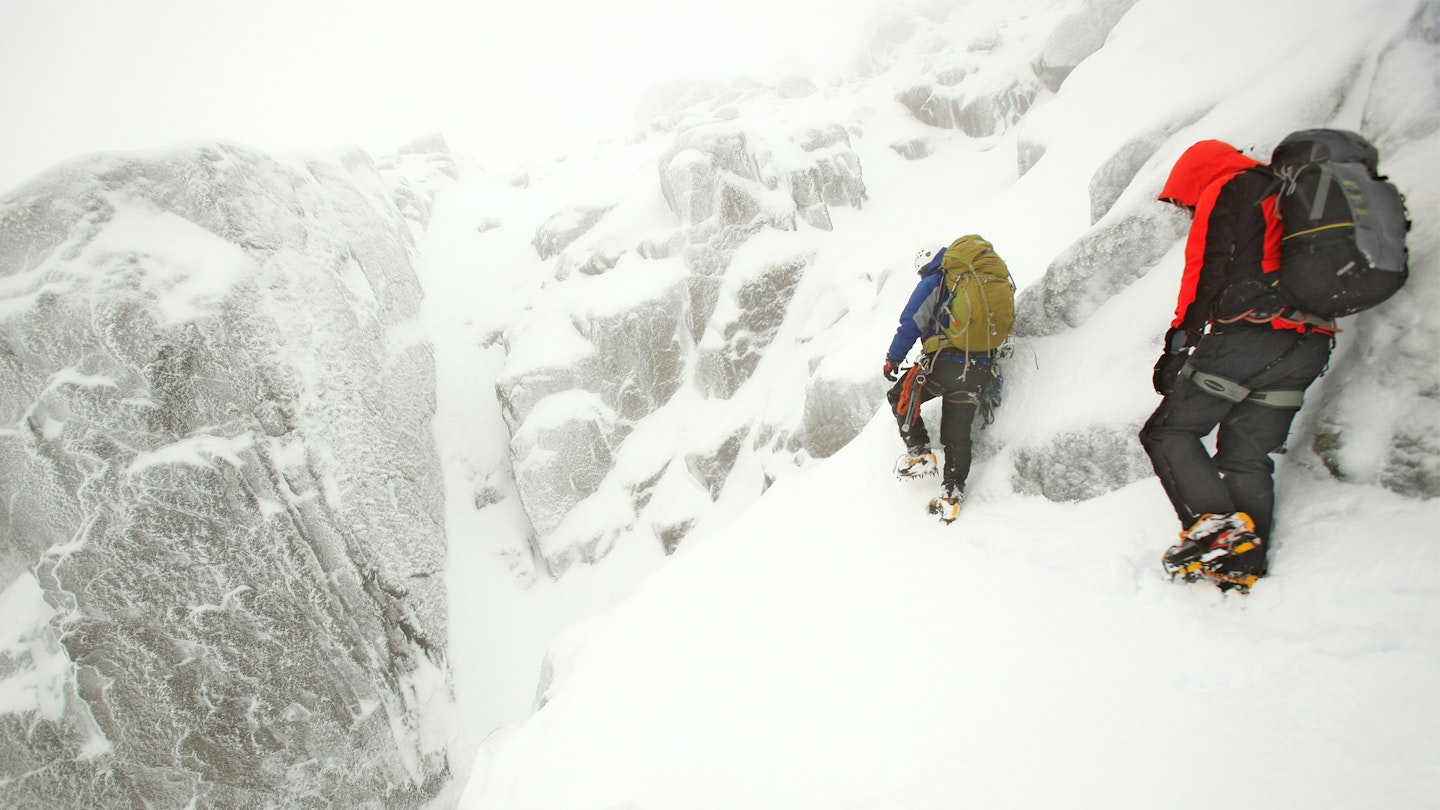
These packs were tested by our experienced freelance gear testers Matt Jones and Ellie Clewlow. The test packs came with us on a blizzard-filled testing trip in Snowdonia. Crunching up Snowdon's Pyg Track in crampons, with ice axes in hand and big hiking packs on our backs, we were glad we’d thought to take not only our winter hardware but also plenty of extra layers. It was seriously cold, even when working hard. The wind howled as we made our way up to the marker stone on Bwlch Glas.
Fumbling with thick gloved hands, we fished around inside our packs for buffs and goggles to fend off the stinging spindrift. There was no sanctuary until we reached the shuttered entrance of the summit café, long closed for winter.
We hunkered down in the doorway for a few minutes and quietly toasted our efforts with swigs of hot chocolate from a flask. We've never been so grateful for having the right kit. This climb occurred on just the sort of day when a big, tough pack is the perfect choice.
Rucksack care and maintenance
The technical fabrics used to make rucksacks are tough and durable, but the right cleaning products are needed to maintain their performance. With rucksacks, we recommend either Grangers Tent and Gear Cleaner, or Nikwax Tent and Gear Care Kit.
Read our in-depth guide on how to care for your rucksack for everything you need to know about rucksack care.
And remember that backpacks are one of the most readily repairable pieces of outdoor kit. A number of specialists, outdoor retailers, and outdoor gear brands offer repair services*. Make use of these – it's more cost effective for you and better for the planet.
*Lancashire Sports Repairs, Cotswold Outdoor, and Alpkit to name just three.
